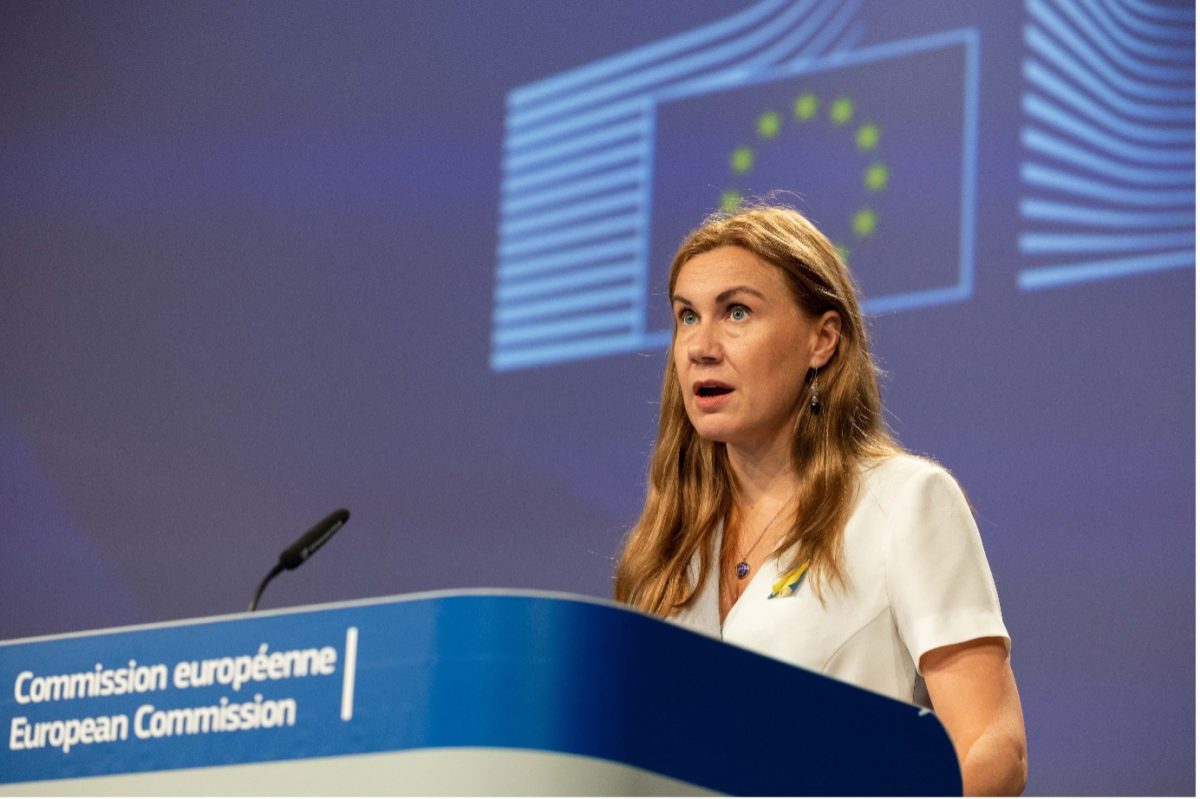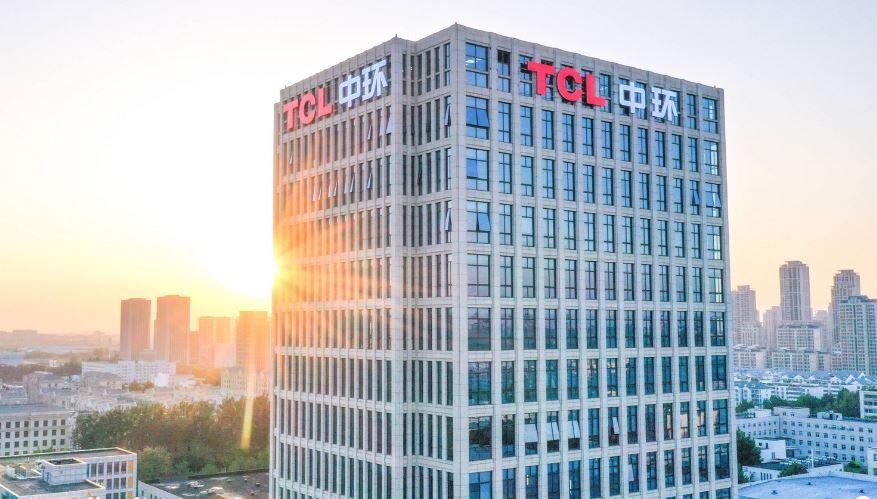Solar is described as the ‘kingpin’ of the REPowerEU plan to move away from Russian gas. In the current geopolitical climate, the decentralised and domestic production aspect of solar power generation is more appealing than ever. Stories from the Ukrainian resistance, where solar PV is keeping the lights on in hospitals, and homes, underline the strategic resilience of solar power. In partnership with the Solar Energy Association of Ukraine, we recently held a joint webinar on EU and Ukrainian solar markets, where discussions covered the role of renewables in divesting from Russian gas, as well as the role solar will play in the green rebuilding of the country.
As a consequence of the invasion of Ukraine, and the recognition that Europe must move away from Russian fossil fuels, the European Union has dramatically increased its renewable energy ambition. May 18 marked a watershed moment for European solar, with European Commission President Ursula von der Leyen introducing the first dedicated EU strategy for solar expansion. Crucially, we now have a dedicated European target for solar deployment for 2030 – around 750 GWdc. As initial EU ‘Fit for 55’ package proposals translated into around 420 GWac of solar by the end of the decade, this new 600 GWac / 750 GWdc target represents a 43% increase in ambition. In her complementary speech, EU Energy Commissioner Simson reaffirmed SolarPower Europe’s mission that by 2030 “solar energy will be the largest electricity source in the EU.”
Alongside the Solar Strategy, the European Commission has officially proposed a minimum 45% renewables target for 2030, in line with our #Yesto45RES campaign, supported by IPCC scientists and 10 other industry associations. The 45% goal now needs to survive the European Parliament, where key MEPs are calling for even higher targets, and the Council of the EU, where Czechia will soon hold the six-month Presidency. Given this landscape, and the geopolitical urgency, the minimum 45% ambition has a fair chance of enduring. Our modelling suggests that a minimum 45% goal would take Europe into its solar Terawatt Age at the end of the decade. Between the 750 GWdc solar specific target, and the Terawatt reality that could be achieved, solar could replace the equivalent of up to 117 bcm of Russian gas by 2030 (out of annual imports of 155 bcm).
Of course, ambitious targets need solid frameworks and inviting investment signals, and the EU solar strategy comes with a suite of flagship initiatives to support the massive solar deployment plans on the table – rooftop, skills, manufacturing, and permitting are all addressed.

Image: SMA Solar Technology
The EU Solar Rooftop Initiative – a long-sought achievement for SolarPower Europe – introduces a revolutionary mandate for solar rooftops on all public and commercial buildings by 2027, representing an enormous step for solar expansion and decarbonisation. Conservative estimates say that EU rooftops could cover around one quarter of the EU’s electricity consumption. With commercial and industrial rooftops representing two-thirds of Europe’s rooftops, we should also look to the inclusion of an industrial solar rooftop mandate to truly maximise rooftop potential. The rooftop mandate also, crucially, extends to new residential buildings in 2029, empowering Europeans to become the master of their home’s energy. To take the rooftop wave to its natural peak, we should address the rooftops of existing building stock, even aiming for around 80% solar rooftop coverage.
Solar sovereignty is best supported by a diversified and global supply chain, with a strong European manufacturing base – and the EU Solar Strategy introduces an EU Solar PV Industry Alliance to restore domestic manufacturing. Details are forthcoming, but the Industry Alliance endorses, and is set to build on, our European Solar Initiative minimum goal of 20 GW manufacturing capacity by 2025. The Alliance will convene actors along the value chain, supporting new, more efficient, & sustainable technologies – including strong R&D links to the Horizon Europe programme. InvestEU, the Innovation Fund, and Cohesion policy funds are all set to be included within a new EU-level mechanism to coordinate funding for domestic solar manufacturing.

Image: Meyer Burger
Alongside rooftop and manufacturing targets, the European Commission have proposed a Skills Partnership for onshore energy – including solar – within the EU Pact for Skills. In 2021, our EU Solar Jobs report projected up to 1.1 million EU solar jobs by 2030, and already industry reports bottlenecks in accessing the skilled labour needed to roll out solar deployment. The Skills Partnership will seek to resolve this supply/demand imbalance by co-ordinating training and industry stakeholders, while also identifying EU funding sources to support local re- and up-skilling measures, such as the European Social Fund.
Any strategy to accelerate renewable deployment would be incomplete without measures addressing the well-known permitting issues that the sector faces. Alongside the EU Solar Strategy, proposed amendments to the EU Renewable Energy Directive would mandate EU Member States to appoint priority areas where renewable energy projects are likely to have low environmental impact – like artificial/built surfaces, degraded land, or former industrial sites.
These priority areas will be part of the favourable areas for renewables that member states already must define as part of their National Energy and Climate Plans. Notably a new set of proposed timelines for permitting procedures would limit their length to a maximum of 2 years outside priority areas, 1 year within those areas, and only 6 months for projects at 150 kW in priority areas. Should permit application processes exceed those deadlines without objection, tacit agreement from the competent authority would apply.
While 2022 is undoubtedly a difficult year, no more so than for our fellow Europeans in Ukraine, there is some hope on the horizon. New backing from European leaders and the European Commission for Ukraine’s EU Member State accession bolsters the country’s resistance. Increased renewable and solar ambition supports the continent’s independence from Russian gas. The world has just entered its solar Terawatt Age, taking us closer to our Paris Agreement climate commitments. There may be a tough winter ahead, but this Midsummer marks a ray of hope to take us through the challenging times we must face together.
About the author

Walburga is the CEO of SolarPower Europe. She is responsible for the overall performance of the association. Her previous experience includes her roles as Head of the EU Representation Office at VERBUND for nine years; Advisor of Financial and Capital Markets at The Association of German Public Banks and Association of Public Banks (VÖB / EAPB); Competition lawyer at Haarmann Hemmelrath; A Parliamentary Assistant to Austrian MEP and experience in the DG Competition Merger Control Task Force. Walburga has also been a Board Member of Hydrogen Europe. Walburga holds a degree in Law and Business Administration from Leopold-Franzens Universität Innsbruck. She speaks German, English, Dutch and French.
The views and opinions expressed in this article are the author’s own, and do not necessarily reflect those held by pv magazine.
This content is protected by copyright and may not be reused. If you want to cooperate with us and would like to reuse some of our content, please contact: editors@pv-magazine.com.



23 comments
By submitting this form you agree to pv magazine using your data for the purposes of publishing your comment.
Your personal data will only be disclosed or otherwise transmitted to third parties for the purposes of spam filtering or if this is necessary for technical maintenance of the website. Any other transfer to third parties will not take place unless this is justified on the basis of applicable data protection regulations or if pv magazine is legally obliged to do so.
You may revoke this consent at any time with effect for the future, in which case your personal data will be deleted immediately. Otherwise, your data will be deleted if pv magazine has processed your request or the purpose of data storage is fulfilled.
Further information on data privacy can be found in our Data Protection Policy.